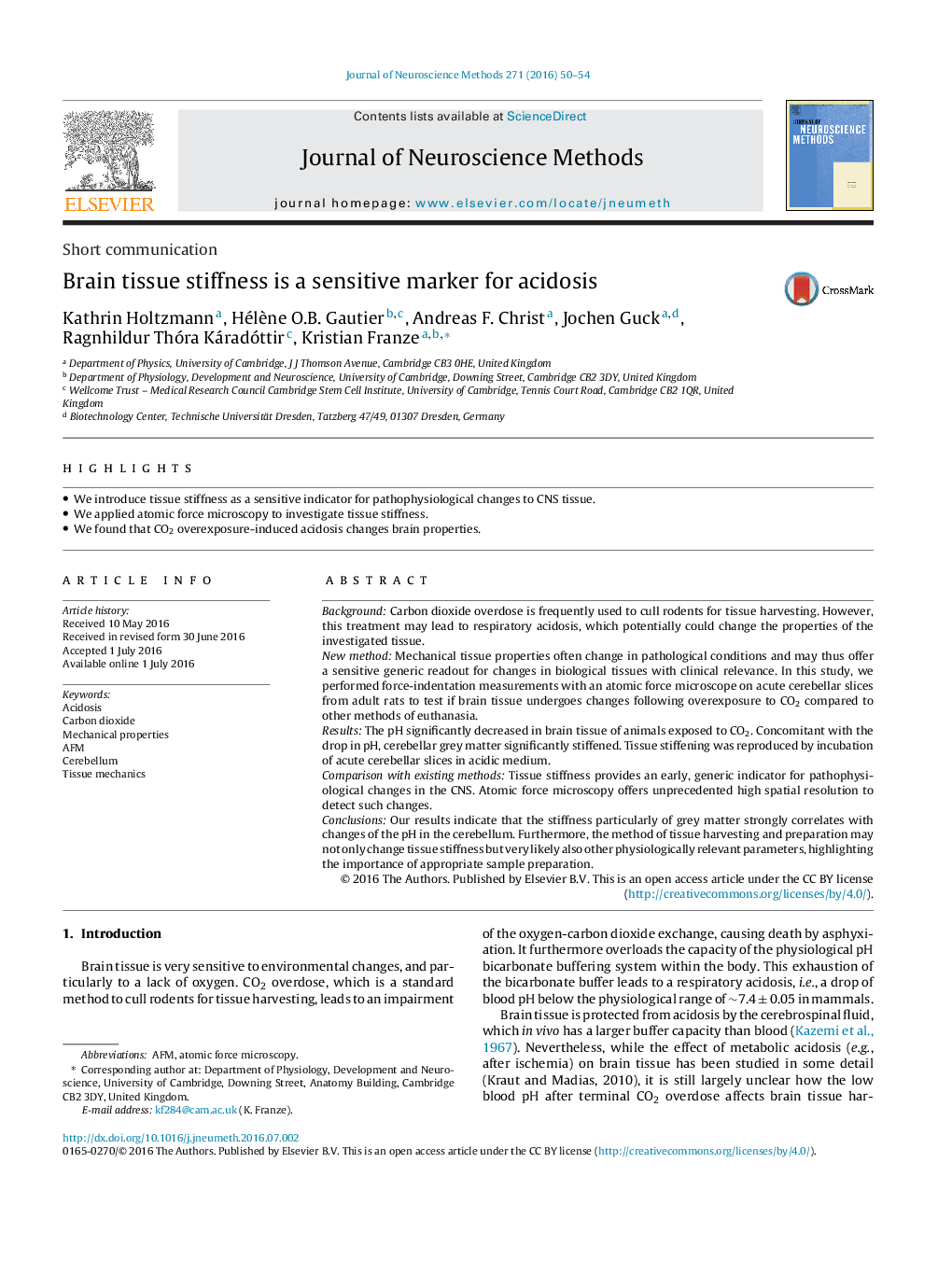| Article ID | Journal | Published Year | Pages | File Type |
|---|---|---|---|---|
| 6267681 | Journal of Neuroscience Methods | 2016 | 5 Pages |
â¢We introduce tissue stiffness as a sensitive indicator for pathophysiological changes to CNS tissue.â¢We applied atomic force microscopy to investigate tissue stiffness.â¢We found that CO2 overexposure-induced acidosis changes brain properties.
BackgroundCarbon dioxide overdose is frequently used to cull rodents for tissue harvesting. However, this treatment may lead to respiratory acidosis, which potentially could change the properties of the investigated tissue.New methodMechanical tissue properties often change in pathological conditions and may thus offer a sensitive generic readout for changes in biological tissues with clinical relevance. In this study, we performed force-indentation measurements with an atomic force microscope on acute cerebellar slices from adult rats to test if brain tissue undergoes changes following overexposure to CO2 compared to other methods of euthanasia.ResultsThe pH significantly decreased in brain tissue of animals exposed to CO2. Concomitant with the drop in pH, cerebellar grey matter significantly stiffened. Tissue stiffening was reproduced by incubation of acute cerebellar slices in acidic medium.Comparison with existing methodsTissue stiffness provides an early, generic indicator for pathophysiological changes in the CNS. Atomic force microscopy offers unprecedented high spatial resolution to detect such changes.ConclusionsOur results indicate that the stiffness particularly of grey matter strongly correlates with changes of the pH in the cerebellum. Furthermore, the method of tissue harvesting and preparation may not only change tissue stiffness but very likely also other physiologically relevant parameters, highlighting the importance of appropriate sample preparation.
